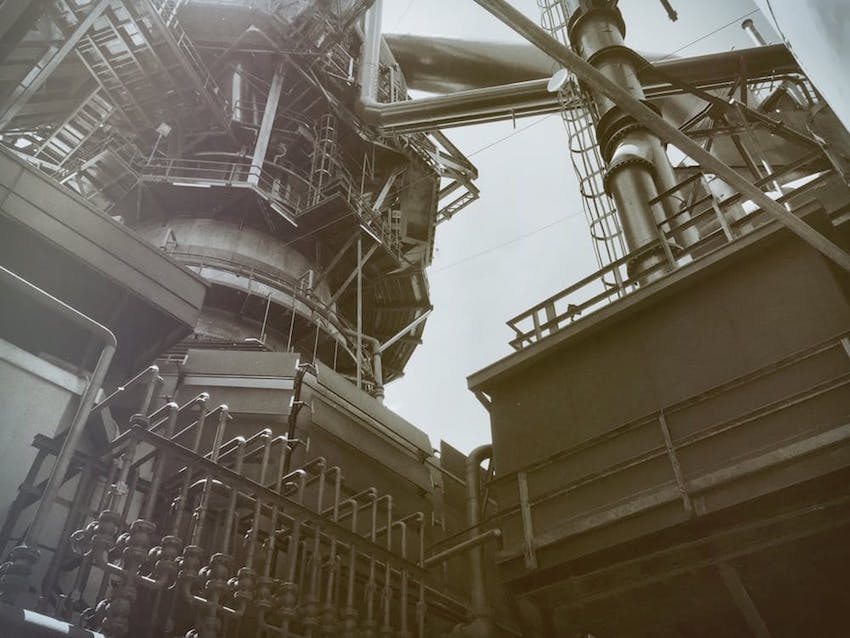
Energy Companies Working Hard To Reduce Greenhouse Gas Emissions With Technology And Innovation
In November 2016, ENVIA Energy completed the construction of the first-ever microchannel gas-to-liquid plant in the United States. While both large- and small-scale biomass plants capture methane produced from biomass dump sites around the world — biomass plant technology is decades old — microchannel plants are a new and unique technology.
Located in Oklahoma, the ENVIA Energy microchannel plant will have the capacity to convert greenhouse gases into liquid form, a physical change necessary for the production of petroleum products.
It is safe to assume microchannel gas-to-liquid plants have a sustainable future, as the petroleum products produced by microchannel plants are high quality: “GTL plants convert natural gas to higher-valued petroleum products, including liquid fuels, waxes, and chemical feedstocks.”
Greenhouse Gas Emission Reduction
Landfill biomass methane production plants can dramatically reduce greenhouse gas emissions. According to the EPA, the third-highest producers of greenhouse gases are landfills. Specifically, while CO2 is also a greenhouse gas, it is the methane that does the most short-term damage with respect to global warming.
“Even though we emit less methane than carbon dioxide, it has a greater short-term impact on global warming. In fact, methane is 86 times stronger than carbon dioxide over a 20-year time frame,” says Center of American Progress writer Matt Kaspar. Furthermore, “methane is 34 times stronger a heat-trapping gas than CO2 over a 100-year time scale,” explains Founding Editor of Climate Progress, Jim Romm.
In a study conducted by the Environmental and Energy Study Institute, it was determined that almost half of all landfill gas emissions are methane.
Food Waste Greatest Contributor to Landfill Greenhouse Gas Emissions
As opposed to wood scraps, grass clippings, cardboard boxes and un-recycled paper, the greatest contributor to landfill greenhouse gas emissions is food waste. According to National Geographic journalist Roff Smith, “More than a third of all of the food that’s produced on our planet never reaches a table.” A full 33 percent of the food produced in the United States and around the world spoils before it reaches consumers or is thrown out by consumers who purchase more than they can eat.
Patty fields alone — and the waste associated with harvesting rice — accounts for an astounding 20 percent of all methane emissions produced by humans. But more than 60 percent of the methane released into the air that is associated with human activities comes from landfills.
Waste Energy Plants
Another alternative in addition to landfill biomass-emissions plants and microchannel gas-to-liquid plants is the greater use of waste-to-energy plants. Today, the United States converts a full 13 percent of its waste total into usable energy by putting to use waste-to-energy plants, according to a 2013 Center for American Progress (CAP) report.
As opposed to dumping biomass into landfills, waste-to-energy plants can convert biomass into energy directly, which can be used to power a grid.
Norway Takes Greenhouse Gas Reduction One Step Further
While Oklahoma’s microchannel gas-to-liquid plant is impressive, Norway has actually accomplished something no one could have imagined two decades ago. Not only has Aker Solutions developed a plant that uses biomass as a fuel to produce electricity, they have developed CO2-capturing technologies.
Rather than being released into the air, “CO2 is stored and sequestered ... [and if] the trial period proves successful and the CO2 capturing technologies work as designed, a permanent carbon capture plant could be built by 2020.”
____________________
Additional Reading & Resources:
- http://www.eia.gov/todayinenergy/detail.php?id=28752
- http://www.eesi.org/papers/view/fact-sheet-landfill-methane
- https://www.epa.gov/ghgemissions/overview-greenhouse-gases
- http://www.climatechange2013.org/images/uploads/WGIAR5_WGI-12Doc2b_FinalDraft_All.pdf
- https://www.americanprogress.org/issues/green/news/2014/04/16/88084/next-steps-to-reduce-methane-emissions-from-landfills/
- http://news.nationalgeographic.com/news/2015/01/150122-food-waste-climate-change-hunger/
- http://www.climatecentral.org/news/food-waste-worsens-greenhouse-gas-emissions-fao-16498
- http://fusion.net/story/259162/how-to-make-burning-trash-even-better/